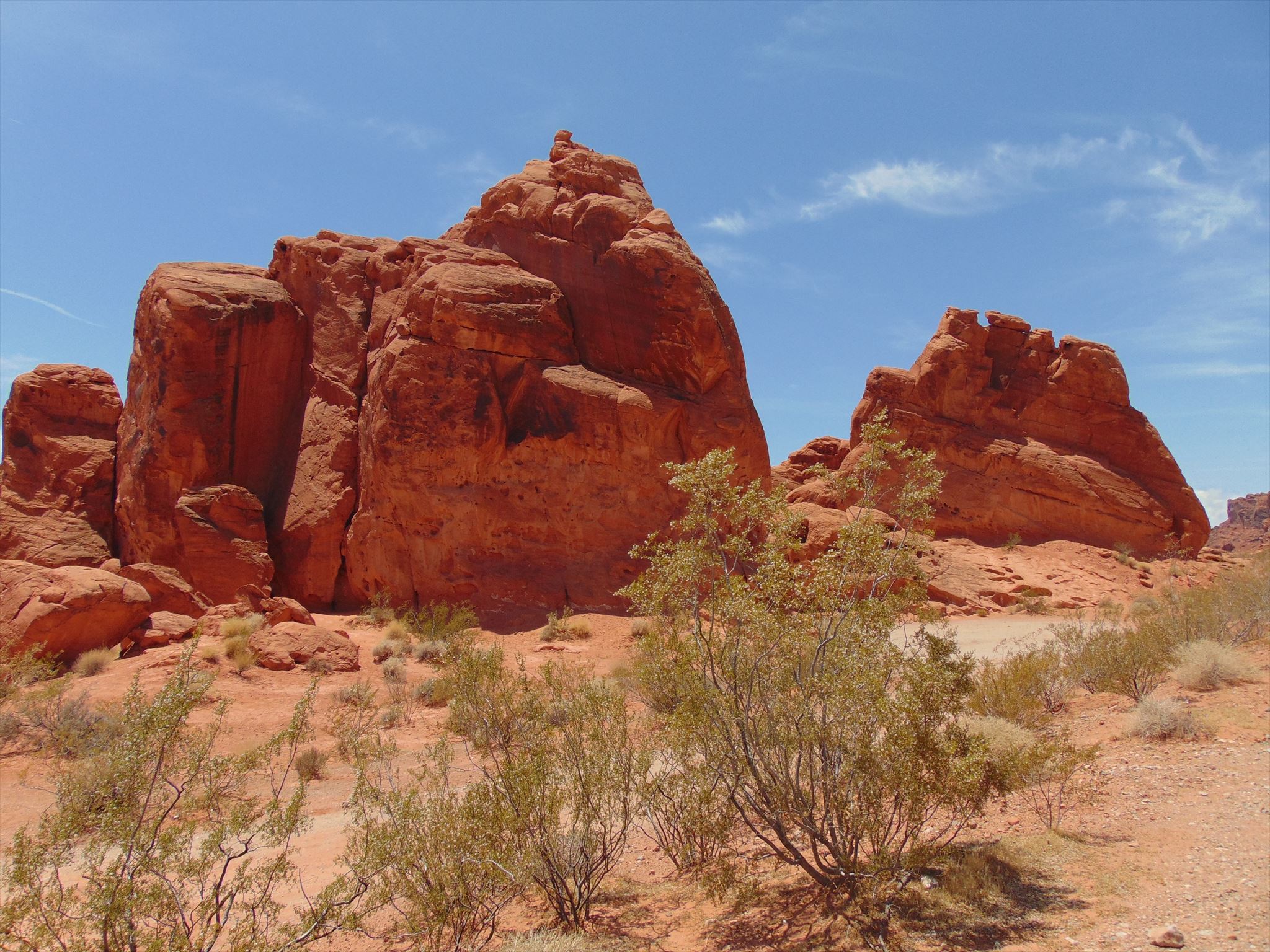
Seven Sisters is a group of 7 tall, red, eroded boulders located in Valley of Fire State Park. It was once part of the nearby red formations, and are all that remain after the relentless forces of erosion stripped away the surrounding sandstone deposits. The park is world-renowned for its 40,000 acres of bright red Aztec sandstone outcrops nestled in gray and tan limestone, and contains ancient, petrified trees and petroglyphs dating back more than 2,000 years.
Valley of Fire State Park is located in what was once an ocean floor. It was lifted by tectonic forces and over time, the ocean receded. During the Jurassic period some 150 million years ago, the area was a vast desert covered with sand dunes. Over time, the sand was compacted and transformed into sandstone through lithification.
One of the coolest features in the park is the tafoni, which is known as honeycomb weathering and is the small, rounded, smooth edged openings in the rock surface. They can occur in clusters looking much like a sponge and are nearly always on a vertical or inclined face protected from surface runoff.
Tafoni are most often found in Navajo sandstone, which is made from ancient dunes cemented together by calcite, which is soluble in water. Moisture makes its way through the porous rock, dissolving the calcite and then depositing it as crystals at the surface when it evaporates. Tafoni shows this process on overdrive: accelerated, focused weathering of pockets of rock with slightly hardened bands in between. What results is an intricate, lacy structure that often resembles a honeycomb.
In other places, you might see a straight line of holes in the rock. There, water has dissolved pockets of less-well-bonded sandstone, often at the contact between two rock layers. Tapping a rock surface will sometimes result in a "hollow" sound, indicating the presence of pockets within.
Tafoni which starts along suhorizontal joints and grows upward is called basal tafoni. This sort of formation can lead to skylights. Tafoni that begins along vertical or near vertical joints are called sidewall tafoni. Fin shaped spires can eventually be undermined to produce windows and arches in such a process.
Logging Requirements
- What are the approximate dimensions of the largest tafone that you see? Are there smaller tafoni inside it?
- Do you see a pattern in the distribution of the tafoni? i.e. – clusters, lines, pairs, etc.
- Would you describe this as a basal or sidewall tafoni?
- (Optional) Upload some photos of the cool rock formations :).